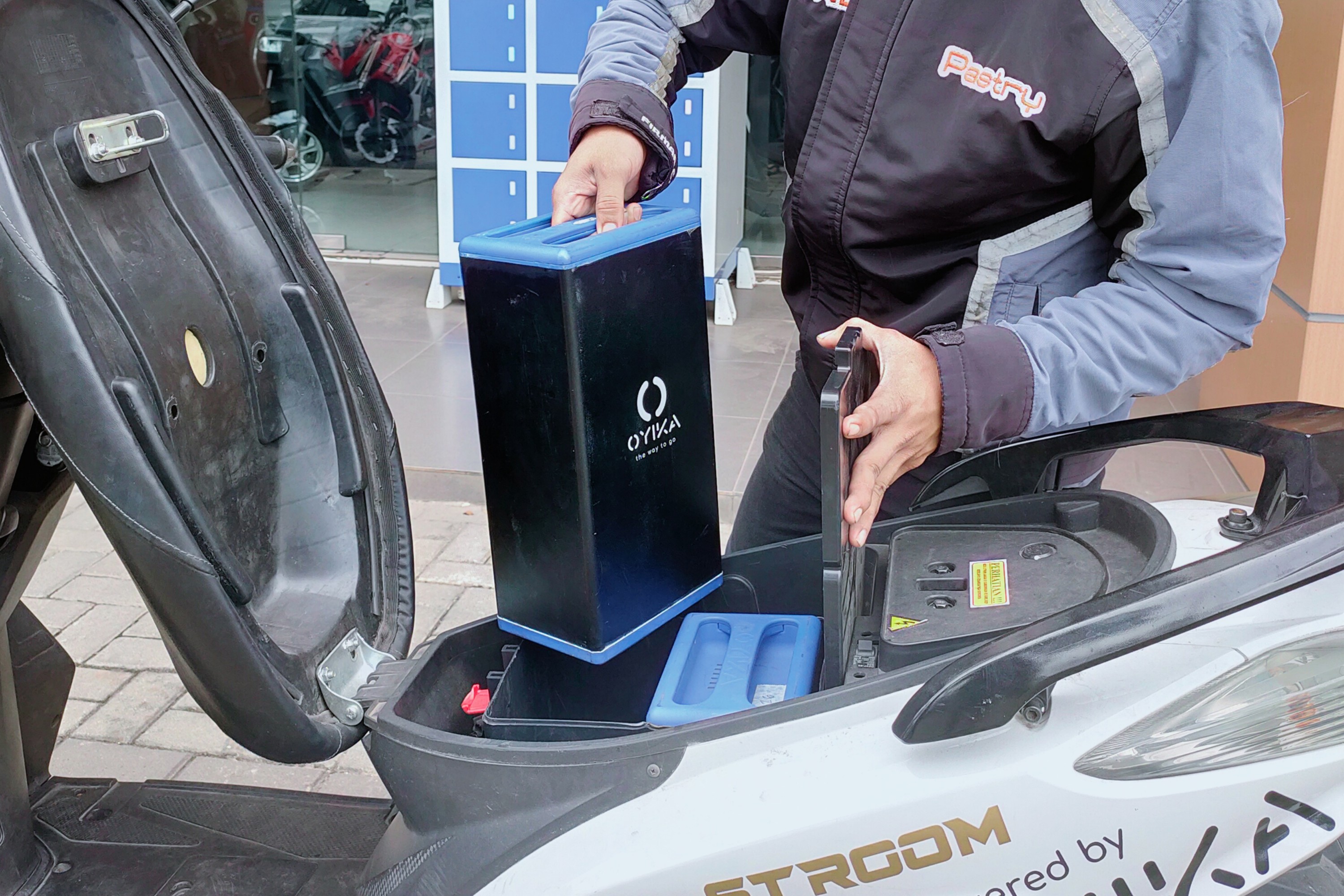Battery swapping for electric motorcycles now possible: LTA
Sign up now: Get ST's newsletters delivered to your inbox

A rider in Indonesia swapping out his electric motorbike battery provided by Singapore electric vehicle battery start-up Oyika.
PHOTO: OYIKA
Follow topic:
SINGAPORE - The Land Transport Authority (LTA) announced the updated national electric vehicle (EV) charging standard on Tuesday (March 1).
Among the changes was the inclusion of standards for battery swapping for electric motorcycles. This is to provide more charging options for motorcycle owners.
The inclusion is seen as a significant development towards the adoption of electric motorcycles in Singapore.
Given their compact size and lower price point, smaller electric motorcycles cannot economically carry the necessary components onboard to charge the battery.
By swapping batteries, this allows them to continue running, potentially reducing the total cost of ownership and increasing the convenience of using electric motorcycles.
Mr Fude Poh, general manager of S.1 Motoring, a large motorcycle retailer group, welcomed the changes.
"The update will definitely speed up the adoption of electrification in Singapore," he said. "For us, we are not only looking at bringing in electric motorcycles with battery swapping capabilities but also to provide a strong network for consumers to swap batteries conveniently."
The typical charging time for an electric motorcycle battery can be up to six hours to travel around 260km. A battery swap can take less than five minutes, which is faster than a typical fuel stop.
While battery swapping is not expected to lower the price of electric motorcycles, it opens opportunities to new forms of ownership, such as a battery subscription model.
Also announced in the update were two new modes of low-powered charging, Mode 2A and 2B, for EVs. The former relates to existing Mode 2 portable chargers, while the latter allows for the charging of detachable EV batteries.
For both modes, portable chargers, rated at less than 2.3 kilowatts, are only permitted to use 15 ampere sockets. To avoid electrical overheating, each socket can only serve one charger at a time.
EV owners can also look forward to faster chargers. The charging limit for the Combined Charging System, which is the national public charging standard, has been raised from 200kW to 500kW.
Currently, the fastest publicly available charger available is rated at 120kW.
With a 350kW charger, taking the example of the Hyundai Ioniq 5 - one of the fastest electric vehicles in terms of charging speeds - a five-minute charge will yield up to 100km of travelling range.
Similarly, the limits for the Chademo charging system, which is the optional public charging standard for Singapore, was raised from 200kW to 400kW.
Chademo connectors are not common. To date, only Nissan and Lexus models sold here use them.
Standards for liquid-cooled cables and pantograph charging methods have also been included.
To enable chargers to be tested for compliance with the revised standard, LTA is working with testing, inspection and certification bodies to be accredited to carry out the test.
During this period, chargers that already comply to the existing standards do not need to be certified again. There will be a six-month transition period before the maintenance and installation requirements in the revised standards become mandatory.
The updates are part of Singapore's overall efforts to expand the charging network for EVs. It follows a review conducted by a joint public-private working group from September 2021 to January 2022.
Appointed by the Singapore Standards Council, the group was led by the LTA and comprised a wide range of industry stakeholders. They include representatives from manufacturers of charging equipment and EVs, testing and certification companies, academic experts, trade associations and professional engineers.
The review looked at new charging technologies in the EV landscape and the charging infrastructure required to support the safe installation, maintenance and operation of charging.

